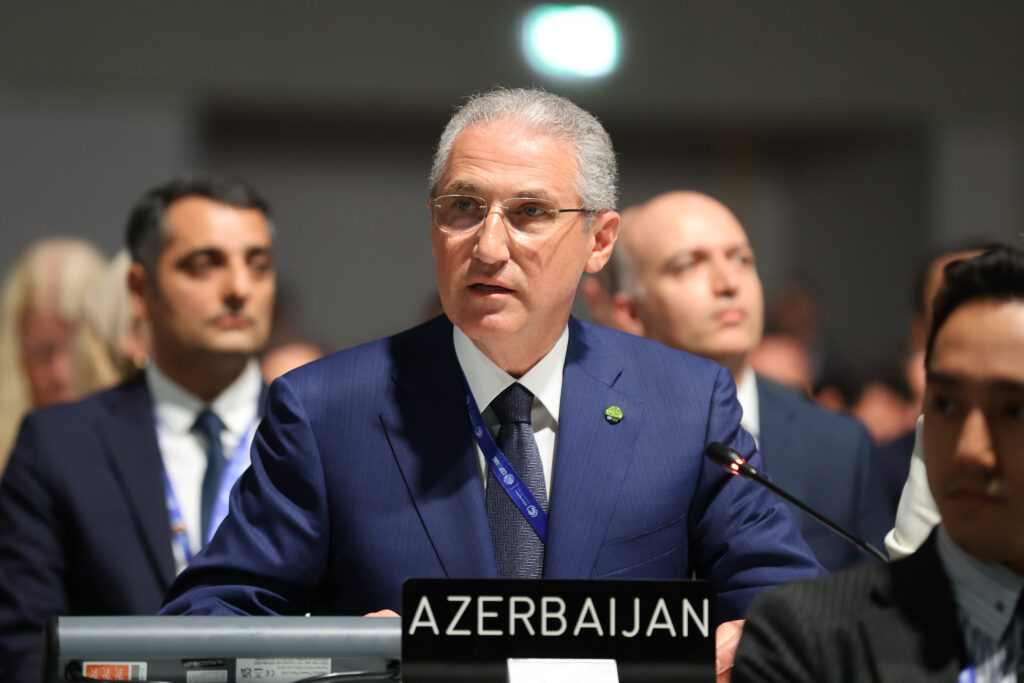Climate change is the elusive culprit that world leaders at the 29th Conference of the Parties (COP29) are once again trying to bring to justice. So far, it has continued to wreak havoc around the globe, with this year’s intense Atlantic hurricane season being just one example in a long list of climate-driven catastrophes.
Most of us know that climate change has spiralled out of control and world leaders have struggled to contain it. But not everyone understands the formal framework through which these efforts take place—the UNFCCC COP.
The COP, or Conference of the Parties, is the annual gathering of member states that have committed to the United Nations Framework Convention on Climate Change (UNFCCC). This global agreement seeks to limit dangerous climate change, and the COP serves as its enforcement mechanism, bringing countries together each year to negotiate crucial climate policies to protect people and the planet.

With that background in mind, let’s dive into some big questions: Where is Baku? When is COP29 happening? Who will attend? What’s on the agenda? And why is this particular COP so significant?
First, some logistics: Baku, the capital city of Azerbaijan, is set to host COP29 from November 11th to 22nd, 2024. Situated between Eastern Europe and West Asia and bordered by the Caspian Sea and the Greater Caucasus Mountains, Azerbaijan will welcome delegations from 198 countries, along with civil society and other key stakeholders in the global climate response.
This year, COP29 has been dubbed the “Climate Finance COP,” and for good reason. UN Climate Change Executive Secretary Simon Stiell, in a recent talk, emphasized that “climate finance is core business to save the global economy and billions of lives.” He also stressed that “all governments must agree on a new goal for international climate finance that truly addresses the needs of developing countries,” hinting at the importance of the New Collective Quantified Goal (NCQG) on Climate Finance in this year’s discussions. If you’re wondering what all this means, don’t worry—a breakdown of climate finance and the NCQG is coming up.
In short, the NCQG represents the next critical step in securing climate finance for vulnerable nations. The UNFCCC defines climate finance as resources provided by developed countries to help developing countries mitigate and adapt to climate impacts. This new goal will aim to significantly expand on the previous $100 billion annual pledge made under the 2009 Copenhagen Accord. At COP29, leaders are expected to establish measurable, transparent targets to ensure accountability in mobilizing these funds, with simplified access for those who need it most, including Small Island Developing States (SIDS), Least Developed Countries (LDCs), and African nations.
Fortunately, leaders will have substantial data to draw upon, including the 2024 UNFCCC Needs Determination Report, which estimated that up to $6.8 trillion in climate finance will be needed annually until 2030 to meet the goals of developing countries. Unfortunately, however, the reality of political negotiations doesn’t always align with the facts.

Before we explore the priorities of the key players at COP29, let’s look back at the critical milestones that have led us here. The global fight against climate change spans decades and has made steady progress with landmark agreements like the Kyoto Protocol, the Paris Agreement, and the establishment of the Loss and Damage Fund. Each party has a voice in COP negotiations through a web of overlapping negotiating groups. For instance, Caribbean SIDS negotiate as part of the Alliance for Small Island States (AOSIS), which itself operates within the larger G77 + China group, a coalition within the Global South’s broader advocacy on climate.
Through difficult compromises and strategic alliances, these groups have helped secure major climate agreements, such as:
- Kyoto Protocol (COP3, 1997)
- Adaptation Mechanism (COP7, 2001)
- Climate Finance Pledges (COP15, 2009)
- Warsaw International Mechanism for Loss and Damage (COP19, 2013)
- Paris Agreement (COP21, 2015)
- Katowice Rulebook (COP24, 2018)
- Loss and Damage Fund (COP27, 2022)
For vulnerable nations like SIDS and LDCs, these achievements have been lifelines in the fight for climate justice. AOSIS Lead Negotiator Anne Rasmussen recently underscored that “the implementation of urgent and ambitious climate action focused on achieving the 1.5°C goal” should be a COP29 priority, along with a finance goal that guarantees access for SIDS and LDCs as outlined in the Paris Agreement.
However, as climate disasters like Hurricane Beryl continue to devastate the Caribbean and Gulf Coast, the commitment to robust financial support for Global South countries appears to waver. As cli mate impacts begin to encroach on wealthier nations, there is growing hesitation to share resources equitably to support the most vulnerable regions in their adaptation and survival efforts.
Stay tuned for more updates from COP29 in Baku, where I’ll be reporting on the critical significance of Loss and Damage for Caribbean SIDS as a Climate Tracker Caribbean COP29 Journalism Fellow. Follow @bccya.242 and @climatetrackercaribbean on Instagram, or visit the UNFCCC website for real-time updates!